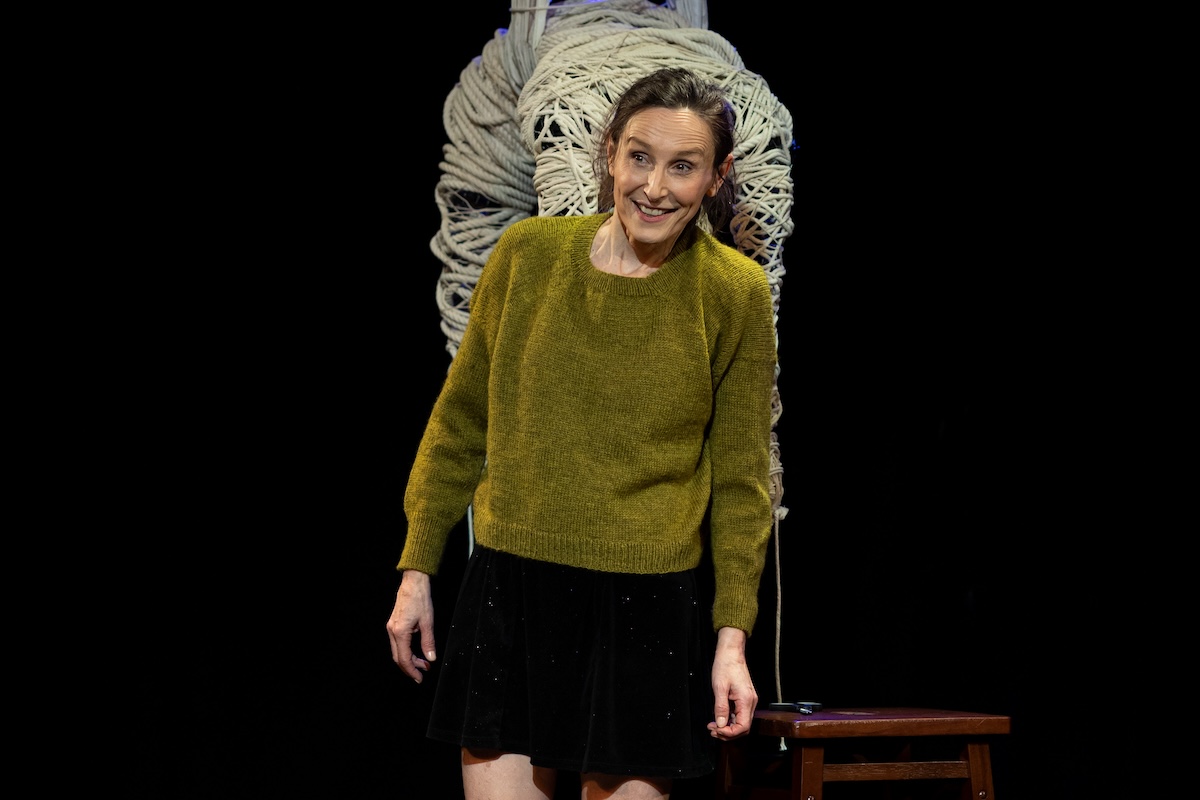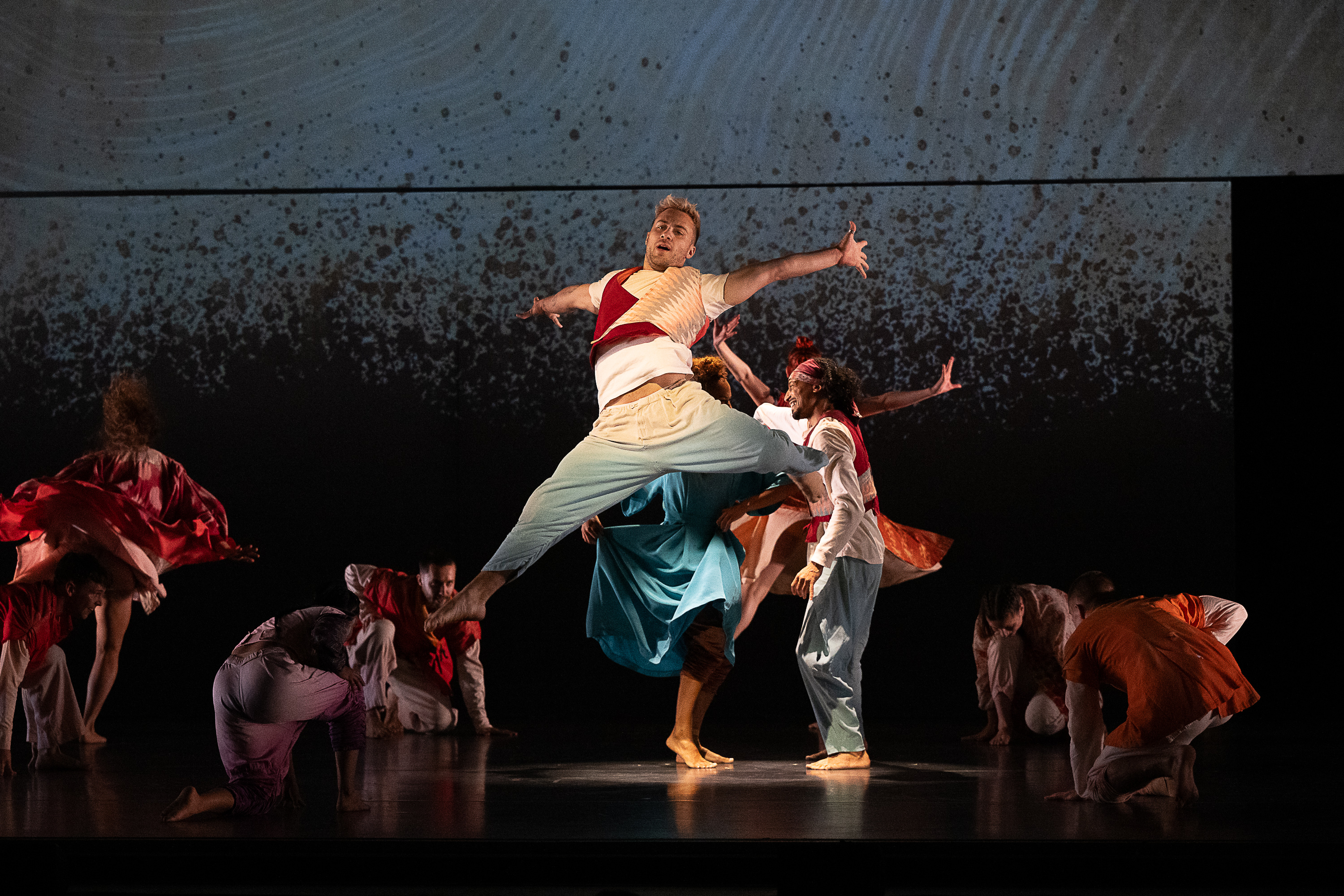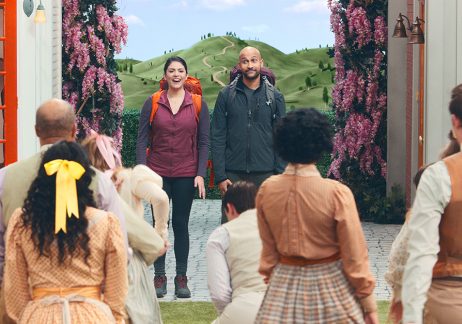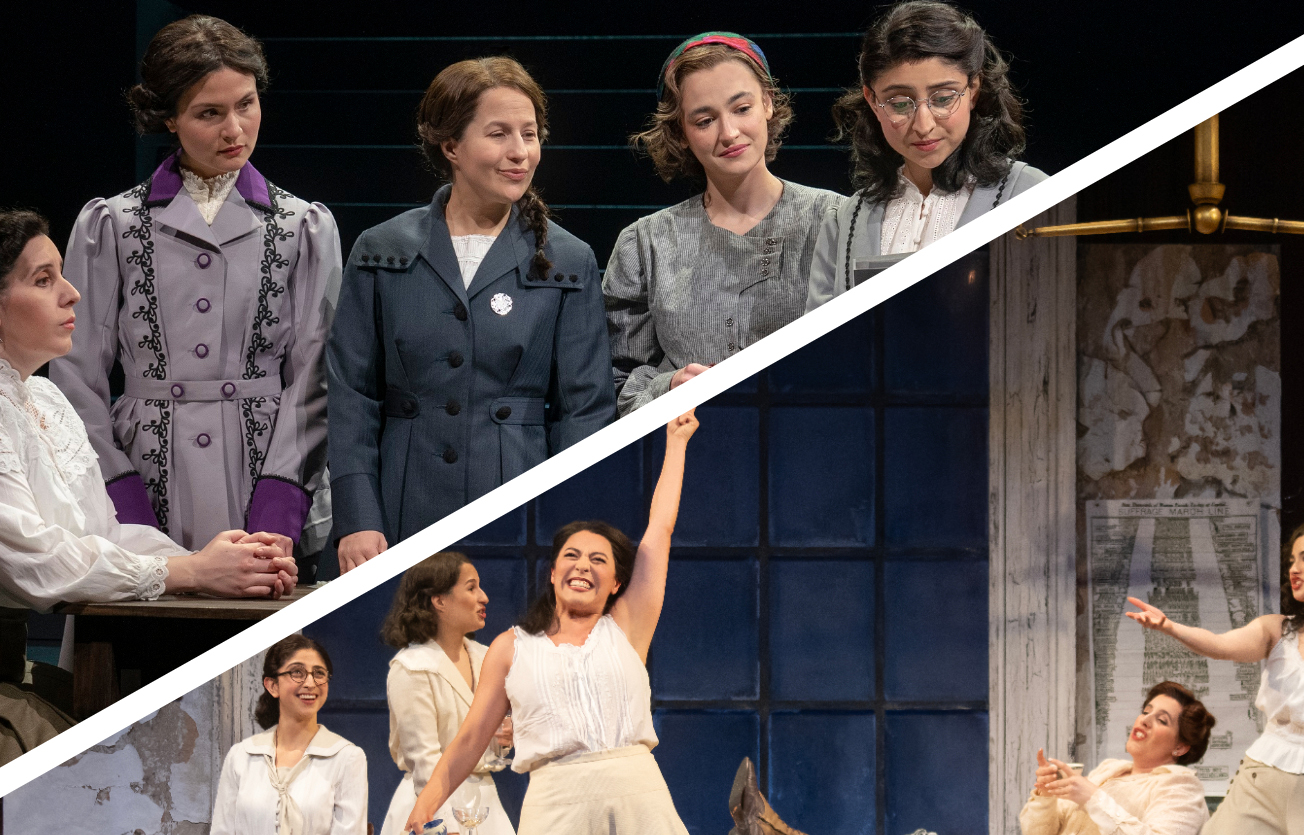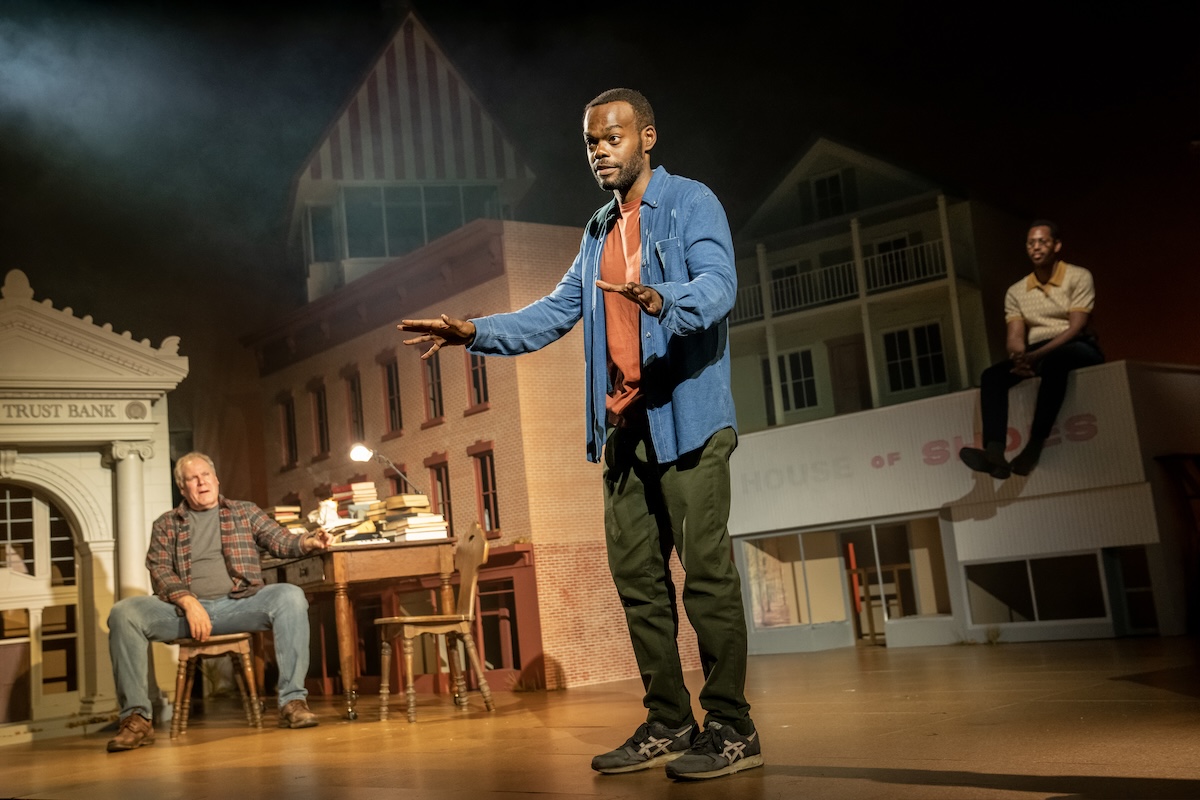Review: It Came From Outer Space, Ray Bradbury's Cult Classic Saucer Saga, Lands in Chicago
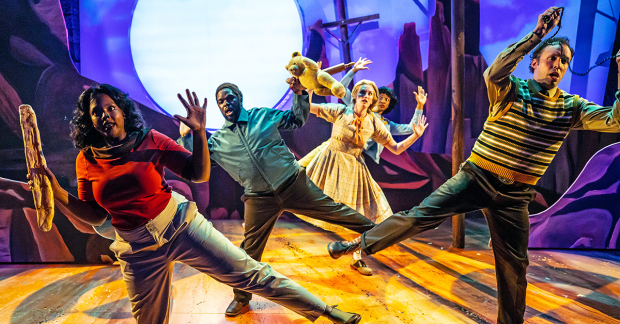
(© Liz Lauren)
Last week marked the 75th anniversary of a reputed flying saucer crash in Roswell, New Mexico, an incident that continues to tickle the public fancy. That widely publicized event was part of the inspiration for the 1953 film It Came From Outer Space, shot in 3-D, with a story by sci-fi titan Ray Bradbury, in which gelatinous-looking, multi-armed aliens crash-land in Arizona. Now Chicago Shakespeare Theater is offering a live adaptation of the creature feature in the form of a world-premiere musical. It's not the greatest thing since sliced bread, but it's clever and lighthearted enough to please.
The original film, however, was not lighthearted. Similar to the 1951 classic The Day the Earth Stood Still, this film had an earnest message about overcoming our natural defensive instincts when encountering beings who are different from us. Nowadays, we make fun of 1950s sci-fi films about radiation-enlarged insects and attacking Martians, so the chief issue facing authors Joe Kinosian (book and lyrics) and Kellen Blair (book and lyrics) was one of tone: How do you have fun with It Came from Outer Space and still honor its message of acceptance?
The film's setting, sleepy Sand Rock, Arizona, is retained, as are the principal characters, but the authors intentionally transform them into clichés. There's egghead scientist John Putnam (Christopher Kale Jones), who first encounters the aliens; the local sheriff Matt Warren (Alex Goodrich), who doesn't believe Putnam; schoolteacher Ellen Fields (Jaye Ladymore); and various locals played by Jonathan Butler-Duplessis, Ann Delaney, and Sharriese Y. Hamilton, who double and triple (as does Goodrich) as humans and aliens. Kinosian and Blair make Putnam rather full of himself, with many jokes about his coming from the "big city" — Tucson! They also make Putnam and Sheriff Warren rivals for the teacher's affections.
The staging — in Chicago Shakespeare Theater's small Upstairs Theatre — is impressively clever under director Laura Braza and an exceptional design team, especially video-projections designers Rasean Davonte Johnson and Michael Salvatore Commendatore, who have created beautiful 3-D-ish effects. The projections stand out against the flat, cartoon-like scenery pieces (mostly of red sandstone rocks) by Scott Davis, which the ensemble rearranges as necessary. The audience is engaged waiting for the next staging device or gag; however, the show becomes increasingly earnest as it proceeds, with most of the let's-make-fun moments in the first half. There definitely is a tonal shift, although the clever staging devices continue throughout, thereby creating a bit of attitudinal conflict. The authors, and Chicago Shakespeare Theater creative producer Rick Boynton (who commissioned and developed the piece), need to work this out.
The score is pleasantly mainstream musical comedy, with 13 numbers (plus several reprises) packed into 95 minutes. Perhaps the most arresting number is the ethereal "We Are Out There," sung by the unseen aliens to open and close the show. "We are out there . . . We are among you … We are your neighbors," they intone with just the right touch of mystery and menace. The score benefits from Macy Schmidt's orchestrations for keyboard, percussion, and a slew of wind instruments: two flutes, two clarinets, piccolo, bass clarinet, tenor and alto saxes, plus one English horn (all played by only two players). They give the score lilt and warmth without a driving beat, while the piccolo and bass clarinet are sufficient to provide the ominous and spooky tones required for sci-fi.
The members of the appealing, small ensemble look good, perform ably, and have well-blended voices. Jaye Ladymore plays things pretty straight as the schoolmarm (an observation, not a criticism), but the rest of the cast take a tongue-in-cheek stance, supported in several cases by Meka Van Der Ploeg's costumes and Richard Jarvie's wig and make-up design.
It Came From Outer Space is a small-scale, small-cast show that is enjoyable and family-friendly (its occasional four-letter words are unnecessary and easily excisable). Frankly, most people will not be as concerned about the tonal shift as I am, if they even notice it. It would benefit in future productions from two more ensemble members to flesh out the townsfolk and the aliens. Such an expansion still would leave ample opportunities for cast members to double, and for the audience to have fun seeing them do so. This is not a show for Broadway, which would ruin its small charms, but it might play for years off-Broadway and in regional houses and amateur theaters across the country. It's a show that definitely has tentacles, and should have legs, too.



